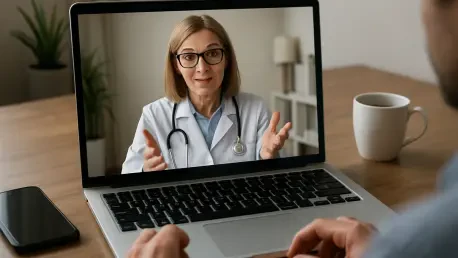I’m thrilled to sit down with Sofia Khaira, a trailblazer in the realm of virtual care and telehealth solutions. With her deep expertise in leveraging technology to bridge healthcare gaps, Sofia has been instrumental in transforming how companies like Rogers Group, Inc. address the unique challenges of providing accessible care to rural and distributed workforces. Today, we’ll dive into the innovative strategies behind virtual care programs, the impact on employee health and engagement, and the personalization that makes these solutions so effective. Our conversation will explore how partnerships with telehealth providers are reshaping employer-sponsored benefits and driving meaningful health outcomes.
Can you walk us through the main barriers Rogers Group faced in ensuring healthcare access for their employees before adopting a virtual care solution?
Absolutely. Rogers Group, with over 30,000 employees spread across rural areas in 12 states, faced significant hurdles. Many of their workers, like quarry laborers and equipment operators, lived far from medical facilities. Getting to a doctor often meant taking time off work and driving an hour or more, which was a huge inconvenience. On top of that, their unconventional schedules—long, irregular hours—didn’t align with typical clinic operating times. This made it tough for employees to use their employer-sponsored benefits effectively, leaving many without the care they needed for both physical and mental health challenges.
What prompted Rogers Group to pivot toward virtual care as the answer to these access issues?
The decision came down to necessity and vision. Rogers Group recognized that traditional in-person care wasn’t sustainable for their workforce. They needed a solution that was accessible, convenient, and cost-effective. Virtual care stood out because it could meet employees where they were—literally and figuratively. The goal was multifaceted: improve overall health, especially cardiometabolic conditions, encourage positive lifestyle changes, achieve better clinical results, and reduce healthcare costs. It was about finding a way to support their people without the barriers of distance or time.
How has the collaboration with a telehealth provider reshaped the healthcare experience for Rogers Group employees since it began in 2019?
The impact has been profound. Since partnering with a telehealth provider, Rogers Group employees have gained 24/7 access to a wide range of services—everything from primary care to mental health support, diabetes management, dermatology, and nutrition guidance. This means someone working in a remote quarry can consult a doctor without leaving the job site. We’ve heard stories of employees managing chronic conditions like diabetes with ease or getting timely mental health support during tough times. It’s not just about access; it’s about transforming lives by making care a seamless part of their day.
In what ways does the virtual care program personalize the experience for each employee?
Personalization is at the heart of the program. Using AI-driven outreach, the system tailors communication to each employee’s specific health journey. This might mean sending a targeted email or direct mail with relevant tips based on their needs—like reminders for diabetes screenings or stress management resources. Beyond technology, health coaches play a huge role. They provide one-on-one guidance, helping employees build and maintain healthier habits, which is especially critical for those in remote areas who might feel isolated from traditional support systems.
What specific health improvements have stood out among employees using this virtual care platform?
The results are really encouraging. One standout area is diabetes management. About 44% of participants with diabetes have reduced their A1c levels to below 6.5, which is considered remission-level—a huge win. Over 87% are using connected devices to monitor their stats, and more than half engage with digital coaching. Employees have shared that they feel more in control of their condition and less stressed about managing it. Overall, there’s a ripple effect of better health and happiness, which also helps reduce costs for both the company and the employees.
How would you describe the level of engagement Rogers Group employees have shown with the virtual care program?
Engagement has been incredibly high. Over 94% of enrolled members are actively using the program, which speaks to how much they value it. What’s even more striking is that 40% of those relying on it for primary care have also tapped into additional services like mental health or nutrition support. For many, this is their first consistent access to care—over 40% didn’t have a primary care doctor in the two years before enrolling, and 21% say they wouldn’t have sought treatment without this option. It’s become a lifeline.
What broader lessons can other employers take from Rogers Group’s success with virtual care?
There’s a lot to learn here. First, virtual care isn’t just a Band-Aid; it’s a strategic solution for accessibility challenges, especially for rural or distributed workforces. Employers should look for partners who can offer a connected care experience—one that doesn’t leave employees navigating fragmented systems or unclear next steps. It’s also about prioritizing outcomes over one-off visits. Care should flow seamlessly, supporting employees at every stage. Rogers Group’s experience shows that when you remove barriers and personalize support, you don’t just improve health—you build trust and loyalty.
What is your forecast for the future of virtual care in transforming workplace health benefits?
I’m very optimistic. Virtual care is poised to become a cornerstone of workplace benefits, especially as more companies recognize the value of accessible, scalable solutions. We’ll likely see even smarter use of AI and data to predict health needs before they become crises, alongside deeper integration with wearable tech for real-time monitoring. I also expect mental health support to grow as a focus area, given rising awareness. Ultimately, virtual care will evolve into a proactive, holistic model that doesn’t just treat illness but fosters wellness—changing how we think about employee health altogether.









